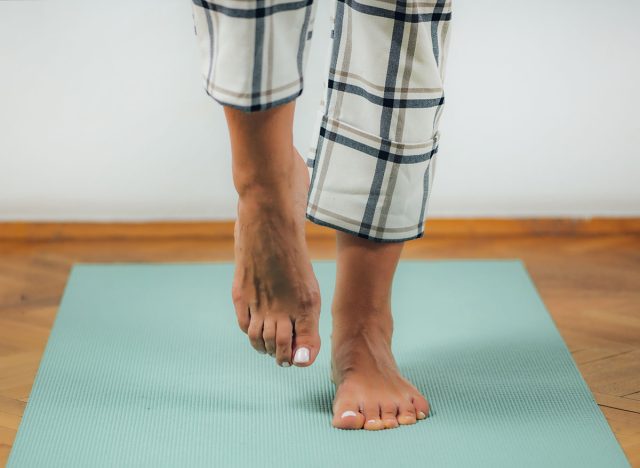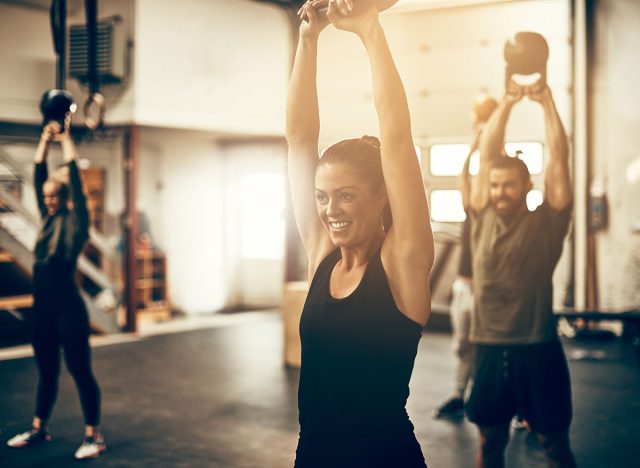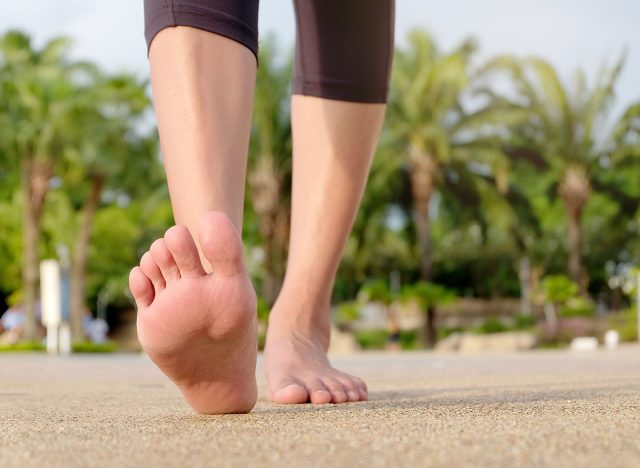4 Balance Exercises That Build Strength & Stability Over 40

Strong balance isn’t just about avoiding falls, it’s about unlocking strength, power, and control that makes every movement feel smoother and safer. Once you pass 40, your body naturally begins to lose some of the coordination and stability that once came easily. But the good news is that the right balance-focused moves rebuild those skills and reinforce your foundation from the ground up.
When your balance holds strong, your strength becomes more usable. Whether you’re climbing stairs, stepping off a curb, or lunging into a workout, balance training keeps your body aligned and reactive. That pays off with better posture, stronger joints, and more efficient movement patterns.
Balance training demands engagement from your entire body: feet, glutes, core, shoulders, every major system has to show up. And when that happens, your body doesn’t just stabilize, it strengthens. These moves sharpen reflexes, challenge smaller support muscles, and teach your body how to stay in control.
All four exercises hit the same goal: building real-world strength and body control that carry over to everything you do. You’ll need a clear space, a sturdy surface for support, and around 10–15 minutes to run through the full sequence. Perform each move with slow, focused effort, and repeat 2–3 times per week.
Single-Leg Reach with Toe Tap

The single-leg reach with toe tap builds strength and control through your hips, ankles, and core. By forcing your body to stabilize on one side, it activates glutes and hamstrings that often get ignored. The slow reach also improves proprioception, your body’s ability to know where it is in space, which sharpens with practice.
How to do it:
- Stand tall with feet hip-width apart.
- Shift your weight onto your left foot and lift your right foot slightly off the ground.
- Reach your right foot forward and lightly tap the floor in front of you, then return to center.
- Repeat the tap to the side and behind you, always returning to center.
- Complete 5 slow reps in each direction, then switch legs.
What it builds: Expect improved single-leg stability, stronger hips, and better coordination during walking, running, and lifting movements.
March with Overhead Hold

Marching challenges balance while building total-body tension. Holding weight overhead activates your shoulders and core while marching tests hip flexor strength and postural control. The combination forces your body to fire in sync from head to toe.
How to do it:
- Hold a light dumbbell or water bottle in one hand directly overhead.
- Stand tall and begin marching in place slowly, lifting each knee to hip height.
- Keep your torso upright and avoid leaning.
- March for 20 seconds per side, then switch arms and repeat.
What it builds: This drill boosts core stability, shoulder strength, and dynamic control with every step. It reinforces upright posture and strengthens the midline against movement.
Heel-to-Toe Walk with Pause

A heel-to-toe walk turns into serious training when you add focused pauses. Walking heel-to-toe trains your ankles, knees, and hips to align with each step while the pause demands core activation and muscle control. Don’t let the simplicity fool you, this one humbles fast.
How to do it:
- Stand tall and place your right foot directly in front of your left, heel touching toe.
- Step forward in a straight line, slowly placing one foot directly in front of the other.
- After each step, pause for 3 seconds before moving again.
- Take 10 steps forward, then walk back to your start.
What it builds: Stronger ankle and hip coordination, improved midline control, and sharper balance reflexes during walking, running, or pivoting.
Split-Stance Dumbbell Row

Balance training meets strength in this variation of the row. The split stance forces you to stay grounded and resist rotation while working your upper back. Together, split-stance dumbbell rows demand engagement from your glutes, core, and feet while building serious pulling strength.
How to do it:
- Grab a dumbbell or household object in your right hand.
- Step your right foot back into a staggered stance, left foot forward.
- Hinge slightly at the hips and row the weight to your side while keeping your torso steady.
- Complete 10–12 controlled reps, then switch sides.
What it builds: Expect stronger upper-back muscles, better hip stability, and improved balance under load, all key for long-term strength and posture.